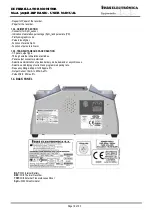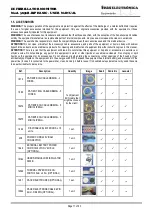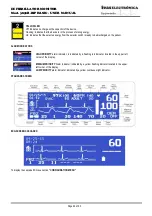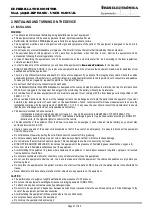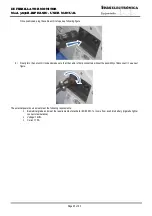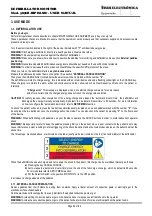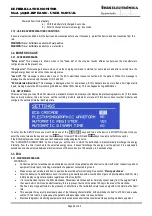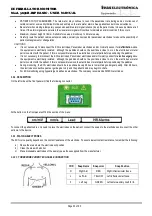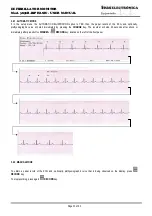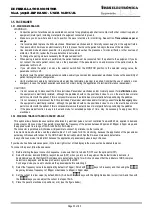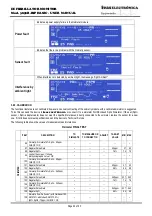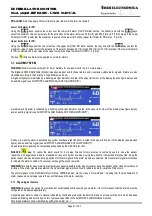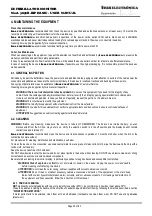
DEFIBRILLATOR MONITOR
Mod. 3850B-BIPHASIC - USER MANUAL
Page 29 of 63
Powered from internal battery:
a)
With the battery fully charged: 9 seconds.
b)
After 15 shocks at maximum energy: 9 seconds.
3.1.5. USE IN ADVERSE WEATHER CONDITIONS
In severe weather conditions, dry the device and accessories before use. If necessary, protect the device and its accessories from the
rain.
WARNING! Never defibrillate a patient with wet paddles.
WARNING! Never defibrillate a patient on a wet surface.
3.2. MONITOR USAGE
3.2.1. SCREEN MESSAGES
“Setup error” This message is shown when in the “turn on” of the
device
founds differences between the manufacturers
configuration and the present one.
“Charge error” This message is shown when, once the charging command is started, for some reason and after a certain time the
charged energy does not reach the chosen energy value.
“Lead off” This message is shown when one of the ECG electrodes looses connection with the patient. When this message is
displayed can be selected only the leads DI, DII and DIII.
“ECG Saturated (Override)” This message is displayed when, for some reason, ECG channels receive more than ±5mV signal at its
inputs, making inoperative ECG monitoring (Paddles or Patient ECG Cable). This can happen during defibrillation.
3.2.2. SETUP MENU
This menu allows you to set the ECG view mode, standard or cascade, display or not display the plethysmographic curve (if this device
have oximetry module), this also let you set the recording mode to automatic or manual (if this device have recorder module), and
configure the automatic internal discharge time.
To enter into the SETUP menu you must hold on one of the
keys and turn on the device in MONITOR mode. Once you
enter the menu, release the key and use the
keys for select YES or NO and
keys to select another menu option.
If the ECG display mode is cascade you can’t enable the plethysmographic curve.
The “AUTOMATIC DISARM TIME” option, allows you set the time in which the defibrillator will automatically discharge the energy
internally, from the time it reached to the selected energy value, if doesn’t discharge the energy over the patient. It is expressed in
seconds and can be selected between minimum values of 30 seconds up to 120 seconds, in 5 seconds steps.
3.3. ECG
3.3.1. WARNING MESSAGES
WARNINGS
•
Conductive parts of electrodes and associated connectors for applicable parts shall not contact with other conductive parts of
equipment (metal part), including metal parts of equipment connected to ground.
•
Make sure you know where and how to position the electrodes for monitoring. See section “Placing electrodes”.
•
After the delivery of a defibrillator shock, if monitoring is undertaken with a combination of gel and patch/paddle, the ECG may
initially display no signal or asystole, regardless of the true rhythm.
•
It is recommended to place the ECG electrodes, Pacemaker electrodes and/or Oximetry sensor away from the surgical field in
the case in which it will use an electrocautery; this is to prevent burns on the patient’s body in the area of the electrode.
•
The heart rate may be affected in the presence of arrhythmias. The cardiotachometer uses an algorithm to determine the heart
rate.
•
This equipment may reject pacemaker pulses of the following characteristics: with amplitude of ±2mV to ±700mV and a pulse
width of 0.1ms to 2ms, anyway keep the patients with pacemaker under close surveillance.
•
Electrocardiographic monitoring equipment and its accessories shall not be considered life-supporting medical equipment.


